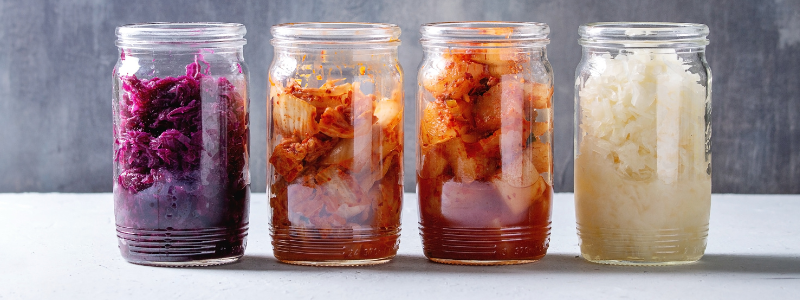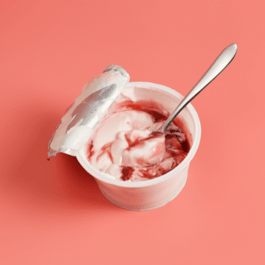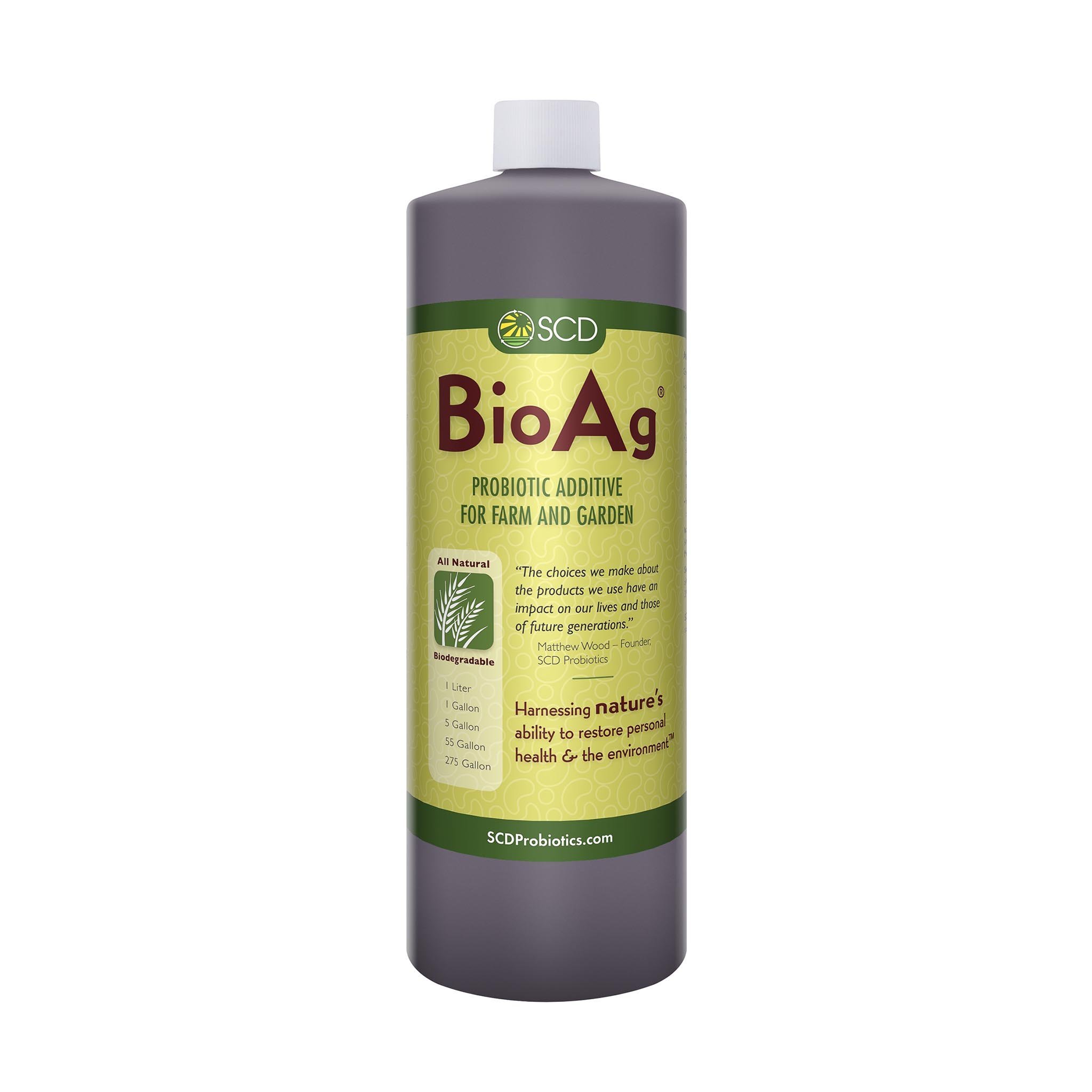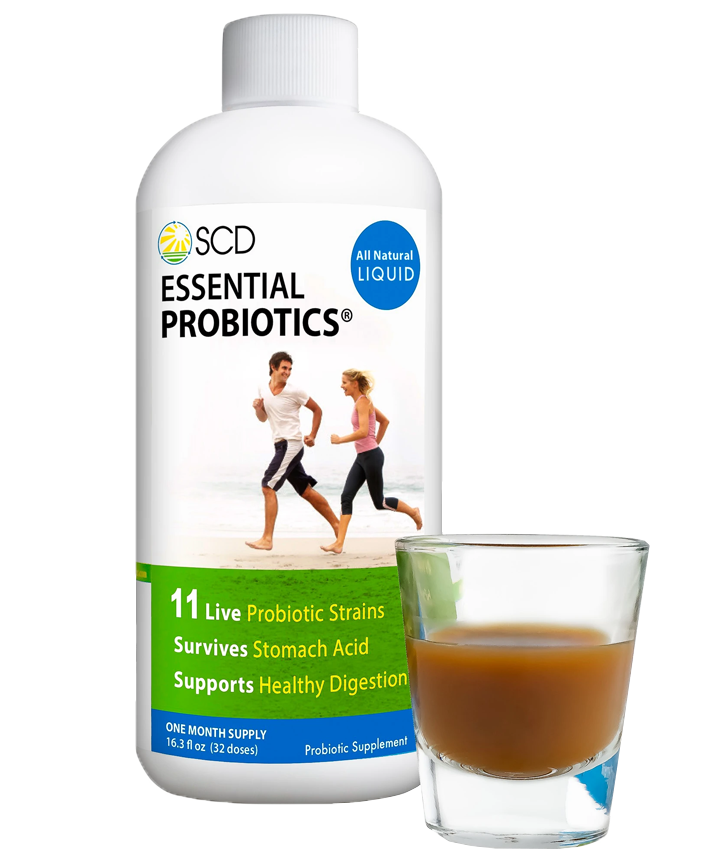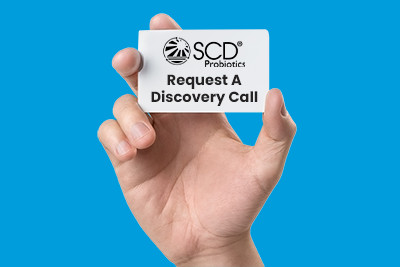Can you get all your probiotics from yogurt? 2 important reasons why that’s a bad idea
So first, let’s take a moment to pause and appreciate yogurt (we promise, this is not a yogurt hit piece). As a food, it’s delicious in many forms and flavors, it’s generally packed with protein, calcium, and other nutrients, and it has a rich history in cultural traditions across the world—from India to Greece to Iceland and more.
And yes, yogurt is fermented (more on that in a bit) and often contains probiotics.
But can you rely on yogurt as your main source of probiotics?
What is yogurt?
Yogurt is a dairy product, made by fermenting milk, that’s been made for thousands of years.
It’s believed that humans have been consuming milk products since around 10,000 – 5,000 BC, when milk-producing animals including cows, goats, and sheep were domesticated.1
But, as we know, milk also spoils quite fast and easily.
Around the time yogurt was discovered, herdsmen in the Middle East were carrying milk in pouches that were made from the guts of animals. Historians believe that when the remnants of intestinal juices (containing gut bacteria) met with the milk, plus warm temperatures, they “soured” and curdled it—and preserved it.1 This was yogurt’s big “eureka” moment and we’ve been enjoying it ever since.
But hang on—just because ancient humans discovered how to make yogurt, did that mean they knew it was good for them and why?
There are Indian Ayervedic texts, dating to 6000 BC, that reference the observed health benefits of consuming yogurt.
Genghis Khan famously attributed the bravery of his warriors to their yogurt consumption. It’s believed that the word “yogurt” comes from the Turkish word “yogurmak,” meaning to thicken or curdle.
The Turkish books Diwan Lughat al-Turk by Mahmud Kashgari and Kutadgu Bilig by K.H. Yusaf, both written in the 11th century, record medieval Turks’ use of yogurt. Turks were the first people who evaluated yogurt’s medicine uses, for symptoms such as cramps and diarrhea, and also to help cool and relieve sunburned skin.1
But like other types of fermented foods around the world, the practice of fermenting milk to create yogurt was first about food preservation.
How fermentation works—and how it preserves food
Fermentation is one of our oldest methods of food preservation, and is an incredible biochemical process unique to microorganisms, mainly bacteria and yeasts. It is a key part of their metabolism: how they eat food and gain energy for growth and life.
When microorganisms ferment something, they are breaking down and turning a complex substance into a simpler form.2 Technically, fermentation involves these microbes converting carbohydrates, sugars, or starches into organic acids and other biochemicals, including alcohol.
Sometimes, this is completely transformational: think of the difference in taste between grape juice and wine, or the difference in texture between milk and yogurt and cheese.
Fermentation also transforms foods’ nutritional makeup. This is important when it comes to fermented foods, but it’s also important to understanding one of the key functions of our own body’s microbes.
We all have immense populations of microbes that live on and in our bodies. The largest communities live inside our guts, where they are intimately involved in our digestion, our immune system, and many other systems.3
When we eat our food, we are not just feeding ourselves: we are feeding our gut microbes too.
Inside our guts, those microbes break down those foods and extract and transform the nutrients into simpler forms our bodies can better absorb and use. 5
Side note: this is where gas comes from (occasional gas is a byproduct of that gut fermentation).
In fact, fermented foods can often be easier to digest because through that fermentation process, the microorganisms have broken down—or pre-digested—the food.
When it comes to yogurt, it’s easier on our tummies than milk as it contains pre-digested lactose (the sugar that’s hard for some people to break down).3
How yogurt probiotics work together and how that teamwork helps with preservation
Yogurt is made with two strains of probiotic bacteria specific to yogurt-making: Lactobacillus bulgaricus and Streptococcus thermophilus. These two bacteria, left in a warm environment, work together to reach a stable state of balance where they’re able to thrive.
Milk is a pH neutral, high-oxygen environment. S. thermophilus likes this environment better than L. bulgaricus does, so it starts growing first. As it grows, it uses up the oxygen and creates new, postbiotic compounds that then create an environment where L. bulgaricus can easily grow.
The L. bulgaricus breaks down some of the milk proteins into amino acids. Amino acids are known as the building blocks of protein. You can think of this process like breaking down a brick house into a pile of bricks. It’s a simpler (less built) form.
These amino acids make it easier for S. thermophilus to collect more nutrients and keep growing.
Both probiotic strains eat the lactose (a form of sugar) that’s in the milk, and from that, they create the postbiotic lactic acid.
The more lactic acid they create, the more acidic the milk becomes, naturally. As the amount of lactic acid increases, two things happen:
- Some of the milk proteins, called caseins, start to clump together. This changes the milk’s consistency, so it starts to thicken, eventually turning into a yogurt consistency.4
- As the environment becomes more acidic, it becomes less favorable to potentially harmful microorganisms, including pathogenic bacteria. This is how they help preserve the milk!
So long as these good, or probiotic, bacteria are more present than the bad bacteria, the yogurt stays edible. This is a perfect example of a healthy, balanced microbiome.
Together, as a team, they’ve created a symbiotic environment: a home they can share together, that’s mutually beneficial, so they can both thrive (rather than compete).
This is how we design and make our probiotics too. As pioneers in microbiome science, we’ve been studying and manufacturing our probiotics for 22+ years. And unlike other probiotic companies, we’re not purchasing and repackaging isolated probiotic strains, then freezing them so they’re either still asleep when they reach your gut or wake up at the wrong time.
We combine traditional fermentation methods with scientific precision to design probiotic products that are as close to nature as possible, most bioavailable, and carefully controlled for real health results.
Modern yogurt and its health benefits
Our ancestors didn’t exactly know what was causing fermentation, or how it worked to preserve food: they just knew that it did. Which was incredibly valuable in its own right. Food that spoiled more slowly meant less wasted resources and less food-borne disease.
It wasn’t until 1905 that yogurt’s Bacillus bulgaricus (now know as Lactobacillus bulgaricus) was discovered by a Bulgarian medical student, Stamen Grigorov.
Then, based on what Grigorov found, Russian Nobel Laureate Yllia Metchnikoff (working at the Pasteur Institute in Paris) suggested that it was the lactic acid bacteria in yogurt that were correlated to longevity in Bulgarian peasants.1
At that time in the West, yogurt started to become known for its health benefits and was even sold as medicine in pharmacies.
It first found commercial success, however, when Isaac Carossa started making yogurt with jams, in Barcelona. His son, Daniel, would later found Danone in France—the company we know here in the US as Dannon.1
Now, Lactobacillus bulgaricus and Streptococcus thermophilus are sold and used together as “starter cultures” to make yogurt, whether at home or on a commercial scale. Sometimes, yogurt is sold with just these identified probiotic strains present—these are the only two bacteria required by law to be present in yogurt.
Both of these bacteria strains must remain alive and active in the final product. Sometimes, other strains are added in.
This seems good, right? Like we said—we are all in favor of yogurt. It’s delicious and nutritious. It’s a fermented food, with llive probiotics.
But there’s a big difference between yogurt and a scientifically designed probiotic.
Reason #1: probiotic diversity
The discovery of microbiomes in the past few decades has been mind-blowing in many ways, not least of which is this fact: we are at least as many bacterial cells as we are human cells.3 We are, in other words, not simply an organism but an ecosystem.
In nature, the biggest indicator of health in an ecosystem is the diversity of life it supports (called biodiversity). The same is true of our gut microbiomes.
While the microbial makeup of each of our guts is unique to each of us, like our fingerprints, the key indicator of our microbiome’s health is the diversity of microbial life. And as epicenters of our whole body (and brain) health, we want our microbiomes to be diverse and healthy so they can support us in full, vibrant, healthy lives.6
So how do you promote diversity in your gut microbiome?
You want to try to avoid pesticides and chemicals, including antibiotics and pesticides in food, that kills all gut microbes, good or bad.
But perhaps most importantly, you want to eat a wide variety of diverse foods that feed our good gut microbes.
Why diverse foods?
Different microbes eat different foods. In general, the good guys like foods rich in fiber, including whole grains, fruits, and vegetables.
When you eat these more complex foods, they are broken down by the fiber-loving microbes in your gut. They’re fermented. Through that fermentation, the microbes create postbiotics called short-chain fatty acids (SCFA).
These short-chain fatty acids lower the pH in your gut (just like lactic acid does in yogurt making). As the environment grows more acidic, this determines the types of microbes that can survive in that environment.
Microbes that have a hard time surviving in that environment include pathogens like C. difficile (C. diff).
On the flip side, the bad guys like foods devoid of fiber, including ultra-processed foods, high-fat foods, and foods high in refined sugars. Eat more of those, and guess which microbes thrive?
And without fiber, the good guys can’t thrive and dominate your microbiome.
What you eat—and don’t eat—dictates which microbes can grow and thrive inside your gut.7
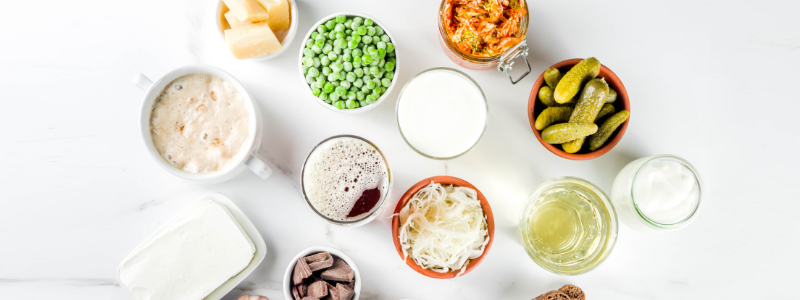
Why fermented foods?
You also want to expose your body to lots of different live microbes. How do you do this?
By spending lots of time outdoors, interacting with microbes in the wild, and by avoiding creating an overly sterile environment (read: you can give that disinfectant a break).
Dog ownership is even associated with more diverse microbes, because our dogs share their microbes with us.
And, of course, you can eat fermented foods.
Like we said, we encourage the consumption of fermented foods! The more, the better: not just yogurt, but sauerkraut, kimchi, kombucha, fermented pickles, and more. Just make sure they have not been processed after fermentation, which would mean they no longer contain any live microbes from that fermentation.8
1. Low probiotic diversity.
By definition, Lactobacillus bulgaricus and Streptococcus thermophilus are the only two required probiotic strains to classify a food as yogurt, and the only two necessary to the yogurt-making process.9 Sometimes, some additional, scientifically studied strains are added—including Lactobacillus acidophilus. Sometimes not. Often, you’ll see an average of three-five strains on a label.
Our flagship, fermented probiotic, SCD Essential Probiotics, delivers a living ecosystem of 11, diverse probiotic strains that have been scientifically selected for their active health benefits.
You can think of our probiotic as a concentrated dose of fermented foods, with higher probiotic diversity. It’s the best of both worlds: a fermented, drinkable probiotic with live probiotics PLUS their postbiotics, designed with nature, and backed by science.
It’s that combination that makes it so effective: so effective that our customers call it the “only probiotic that worked.” And so effective that we offer a risk-free, money-back guarantee. If you don’t start seeing gut health improvements in 7 days, we’ll refund your money.
Because of the nature of yogurt—and the importance of the other foods in your diet, as well as medications—you may not really notice those kinds of quick digestive improvements.
And here’s the thing: we’re not recommending you ditch the yogurt (unless you’re avoiding dairy) or other fermented foods.
We’d recommend you consume both! After all, the science tells us, the more different types of probiotics your gut sees, the better.
2. Your yogurt may be a sugar bomb
Added sugars are one of the sneakiest harms of the American diet, and unfortunately, the yogurt aisle is full of them. Fermentation gives yogurt its signature tangy flavor, and in order to sell yogurt, companies add all sorts of flavors and sugars. In general, this isn’t a bad idea, but if you’re not careful with your label-reading, you may be accidentally consuming so much sugar or high-fructose corn syrup in your yogurt that it becomes harmful.
A single serving of Yoplait brand Blueberry Smoothie yogurt, for example, has a whopping 17 grams of added sugars10 and a 8oz serving of Noosa brand yogurt has 18 grams of added sugar11.
A little bit of sugar is one thing, but too much sugar is harmful for your overall health and your gut. Why? This unfermented sugar feeds the bad bacteria in your gut, giving them fuel to grow and take over—and release pro-inflammatory postbiotics.
SCD Essential Probiotics has 0 sugar (and 0 calories!). 0 sugar means that yes, it has an unsweetened, fermented flavor. Some people hate it. You may be pleasantly surprised!
But the bottom line is (and what our customers say): if you’re suffering from flare-ups of diarrhea, constipation, gas, cramping, and bloating and looking for real digestive improvements—and you haven’t found them from yogurt—does it really matter how it tastes if it works to help you?
At the end of the day, for a gut-healing diet, we recommend loading up on fiber from plenty of diverse plant foods, consuming delicious fermented foods, being careful about their sugar content, AND dosing with a scientifically-designed probiotic.
Sources:
- Fisberg and Machado (2015). “History of yogurt and current patterns of consumption”. Nutrition Reviews.
- Marco (2017). “Health benefits of fermented foods: microbiota and beyond”.
- Sender, Fuchs, and Milo (2016). “Revised Estimates for the Number of Human and Bacteria Cells in the Body.”
- Sieuwerts (2016). “Microbial Interactions in the Yoghurt Consortium: Current Status and Product Implications”.
- WHO Biodiversity and Health
- NIH Human Microbiome Project
- Harvard Nutrition Source: The Microbiome
- Probiotics Fact Sheet for Health Professionals
- FDA Code of Federal Regulations – Title 21
- Yoplait Original Blueberry Smoothie
- Noosa Strawberry Yogurt



